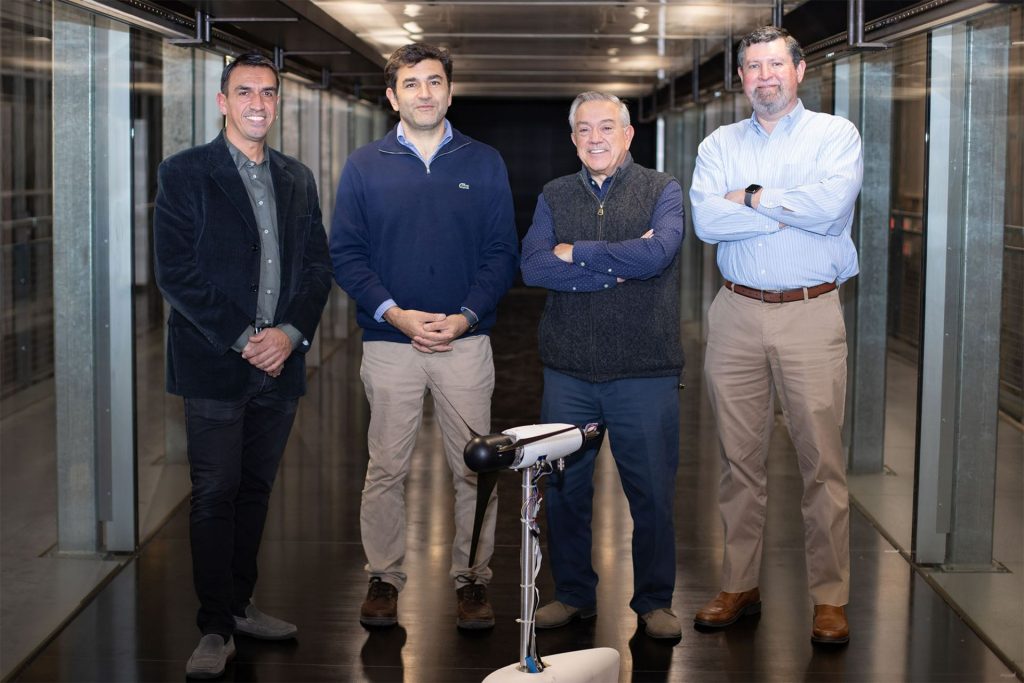
The University of Texas at Dallas’ wind energy research programs have expanded rapidly in recent years, with labs, offices and facilities spread out on campus. In 2020 UT Dallas formed the Wind Energy Center, called UTD Wind, to bring its wind energy programs under one virtual umbrella.
Now, a new initiative will give UTD Wind a physical headquarters for the first time with additional labs, meeting areas and office space. The project also includes additional equipment for wind energy research and education.
UT Dallas has received $1.6 million through the federal Consolidated Appropriations Act to support the expansion, which will bring most of the center’s operations under the same roof.
“It is important for UTD Wind to have a home. These funds will help us carry out our mission to advance wind energy science and engineering, train future experts, and establish public-private partnerships to solve industry problems,” said Dr. Mario A. Rotea, professor of mechanical engineering in the Erik Jonsson School of Engineering and Computer Science and Wind Energy Center director. “We’re very thankful for the support we’ve received from U.S. Rep. Colin Allred and campus leaders who have helped make that possible.”
The headquarters will be located in the Waterview Science and Technology Center, which houses the Boundary Layer and Subsonic Wind Tunnel (BLAST). The research facility, which opened in 2018, features a 26,000-pound fan that creates wind conditions like those in the atmosphere for researchers to study and assess the effects of wind on turbines and other structures.
Federal funding will be used to establish the Intelligent Energy Systems Lab, a state-of-the-art testing ground to develop intelligent systems focused on mechatronics, which involves the integration of mechanical systems with electronics and software, and electronics subsystems for wind turbines and wind farms. Funds also will be used to renovate space to house a wind-wave tunnel, which combines a water tank with a wind tunnel, to expand the center’s research, educational and outreach infrastructure in offshore wind.
UTD launched its first major wind research project, the Center for Wind Energy Science, Technology and Research (WindSTAR) with support from the National Science Foundation (NSF) in 2014. WindSTAR, an NSF Industry-University Cooperative Research Center, began with five research projects and nine member companies. Currently, researchers are collaborating on 12 research projects with 18 industry partners.
“It is important for UTD Wind to have a home. These funds will help us carry out our mission to advance wind energy science and engineering, train future experts, and establish public-private partnerships to solve industry problems.”
Dr. Mario A. Rotea, director of the Wind Energy Center at UTD
“The Wind Energy Center is an example of how UTD serves as a key partner with industry and government to advance technology and facilitate innovation,” said Dr. Joseph Pancrazio, vice president for research and innovation and professor of bioengineering.
UT Dallas has seen growing student interest in wind technology, including a new Wind Energy Club, advised by Dr. Todd Griffith, professor of mechanical engineering and deputy director of UTD Wind. A student team was one of 13 nationally to advance to the final round of the Department of Energy’s Collegiate Wind Competition last year and was selected to compete in the final round again this year in May. In 2022, UTD received a $392,000 NSF grant to offer a Research Experiences for Undergraduates program in wind energy systems, led by Dr. Stefano Leonardi, professor of mechanical engineering and educational program director for UTD Wind.
Texas is the country’s leader in wind energy generation, producing about 25% of the state’s energy, according to the Electric Reliability Council of Texas.
